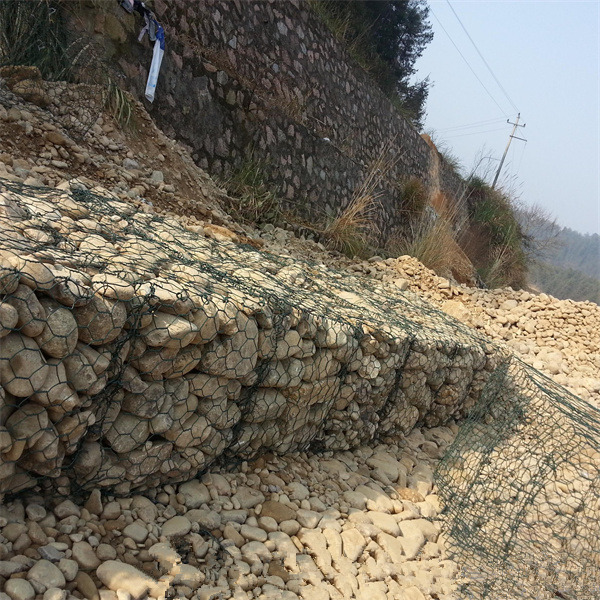ডিসে. . 22, 2024 23:42 Back to list
gabion material
Understanding Gabion Materials A Sustainable Solution for Construction and Landscaping
Gabions, derived from the Italian word “gabbione,” meaning “big cage,” have become increasingly popular in construction and landscaping due to their versatility, aesthetic appeal, and environmental benefits. These structures consist of wire mesh filled with rocks, concrete, or other materials, and are widely used in various applications ranging from erosion control to decorative walls. In this article, we will explore the different types of gabion materials, their uses, and the advantages they offer.
Types of Gabion Materials
1. Wire Mesh The primary component of any gabion is the wire mesh, which is typically made from galvanized steel or PVC-coated wire. Galvanized steel offers excellent corrosion resistance, ensuring longevity in various environmental conditions. PVC-coated wire provides additional protection and can enhance the visual appeal of the gabions by coming in various colors.
2. Rock Fill The most common filling material for gabions is rock. The choice of rock can vary, including natural stones like granite, limestone, or river stones. The size and type of rock used can influence the stability and aesthetic of the gabion structure. For instance, larger rocks provide a sturdier wall, while smaller stones might create a more visually pleasing appearance.
3. Concrete Blocks In some cases, gabions can be filled with precast concrete blocks instead of natural stones. This option can be more standardized and offers a uniform appearance. Concrete-filled gabions can also provide additional weight, making them suitable for applications requiring more structural stability.
4. Ecological Alternatives With a growing emphasis on sustainability, some gabions are filled with recycled materials, such as crushed concrete, glass, or even upcycled plastics. These alternatives not only promote recycling but also reduce the environmental impact of traditional materials.
Applications of Gabion Materials
Gabions are utilized in a variety of settings, contributing to both functional and artistic elements in landscaping and construction
- Erosion Control One of the primary uses of gabions is to prevent soil erosion along riverbanks, slopes, and highways. Their porous nature allows water to flow through while trapping soil particles, reducing runoff and promoting vegetation growth.
- Retaining Walls Gabions are often employed as retaining walls due to their ability to adapt to uneven terrain. Their flexibility allows for the creation of curved walls, making them ideal for landscaping and managing slopes.
- Noise Barriers In urban areas, gabions filled with rocks can be strategically placed to serve as noise barriers, effectively reducing sound pollution from roads and highways.
gabion material

- Aesthetic Features Beyond their practical uses, gabions can enhance the visual appeal of landscapes. They can be designed into artistic structures, garden walls, or even outdoor seating, blending functionality with creativity.
- Wildlife Habitats Gabions filled with natural stones can provide habitats for various wildlife species, supporting biodiversity. The spaces between the rocks can serve as shelter for small animals, and the structures can encourage vegetation growth.
Advantages of Gabion Materials
Gabions offer numerous advantages over traditional construction materials
1. Cost-Effectiveness Gabion structures often require less material and labor than conventional walls, making them a cost-effective choice for many projects.
2. Sustainability By using locally available rocks or recycled materials, gabions reduce the carbon footprint associated with transporting heavy materials.
3. Durability When properly installed, gabions can withstand harsh environmental conditions, including flooding and extreme weather.
4. Flexibility Gabion structures can be designed to fit various shapes and sizes, making them suitable for a wide range of applications.
5. Low Maintenance Once installed, gabions require minimal upkeep, allowing them to provide long-lasting benefits without significant additional investment.
Conclusion
As our world increasingly focuses on sustainability and environmentally friendly practices, gabion materials stand out as a versatile and practical solution in construction and landscaping. Their ability to blend functionality, aesthetics, and ecological benefits makes them an attractive option for various projects. Whether you are looking to control erosion, create retaining walls, or enhance your garden's visual appeal, gabions provide a robust and sustainable choice that is sure to endure the test of time.
-
Why PVC Coated Gabion Mattress Is the Best Solution for Long-Term Erosion Control
NewsMay.23,2025
-
Gabion Wire Mesh: The Reinforced Solution for Modern Construction and Landscape Design
NewsMay.23,2025
-
Gabion Wall: The Flexible, Seismic-Resistant Solution for Modern Landscaping and Construction
NewsMay.23,2025
-
Gabion Wall Solutions: The Durable, Decorative, and Affordable Choice for Every Landscape
NewsMay.23,2025
-
Gabion Basket: The Durable and Flexible Alternative to Traditional Retaining Walls
NewsMay.23,2025
-
Gabion Basket: The Proven Solution for Slope Stability and Flood Control
NewsMay.23,2025
-
Versatility of Chain Link Fence Gabion
NewsMay.13,2025






